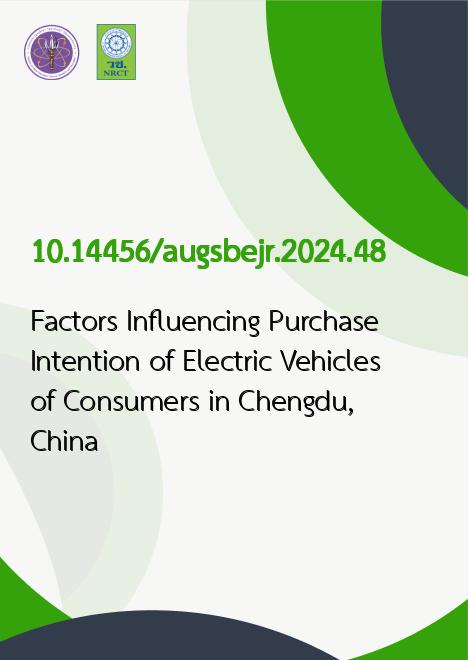
|
Factors Influencing Purchase Intention of Electric Vehicles of Consumers in Chengdu, China |
|---|---|
| รหัสดีโอไอ | |
| Creator | Biming Zhao |
| Title | Factors Influencing Purchase Intention of Electric Vehicles of Consumers in Chengdu, China |
| Publisher | Assumption University Press |
| Publication Year | 2567 |
| Journal Title | AU-GSB e-Journal |
| Journal Vol. | 17 |
| Journal No. | 3 |
| Page no. | 49-58 |
| Keyword | Subjective Norm, Perceived Behavioral Control, Purchase Intention, Electric Vehicles |
| URL Website | http://www.assumptionjournal.au.edu/index.php/AU-GSB/article/view/7638 |
| Website title | AU-GSB e-Journal |
| ISSN | 1906-3296 |
| Abstract | Purpose: This study aims to explore the factors influencing consumers' purchase intention of electric vehicles in Chengdu. The researcher used a quantitative survey method to conduct the study. The conceptual framework of this study includes perceived benefit, perceived risk, attitude, environmental concerns, subjective norm, perceived behavioral control, and purchase intention. Research design, data, and methodology: This research comprises 500 consumers who are residents of Chengdu, aging 18 years old and above, and possess a driver's license, with an adequate income to buy electric vehicles. The validity of the research instrument was assessed by item-objective congruence (IOC), and the reliability of internal consistency was assessed by Cronbach's alpha. In addition, various sampling techniques were used including judgmental, quota, and convenience sampling. Confirmatory factor analysis (CFA) and structural equation modeling (SEM) were used as statistical analysis tools in this thesis to assess the data. Results: perceived benefit and perceived risk significantly influence attitude. Environmental concerns, subjective norm, and perceived behavioral control are significant factors of purchase intention. Conversely, Attitude has no significant influence on purchase intention. Conclusions: This study provides valuable insights for stakeholders aiming to promote sustainable transportation solutions in the region, ultimately contributing to the broader goal of reducing carbon emissions and mitigating environmental impa |